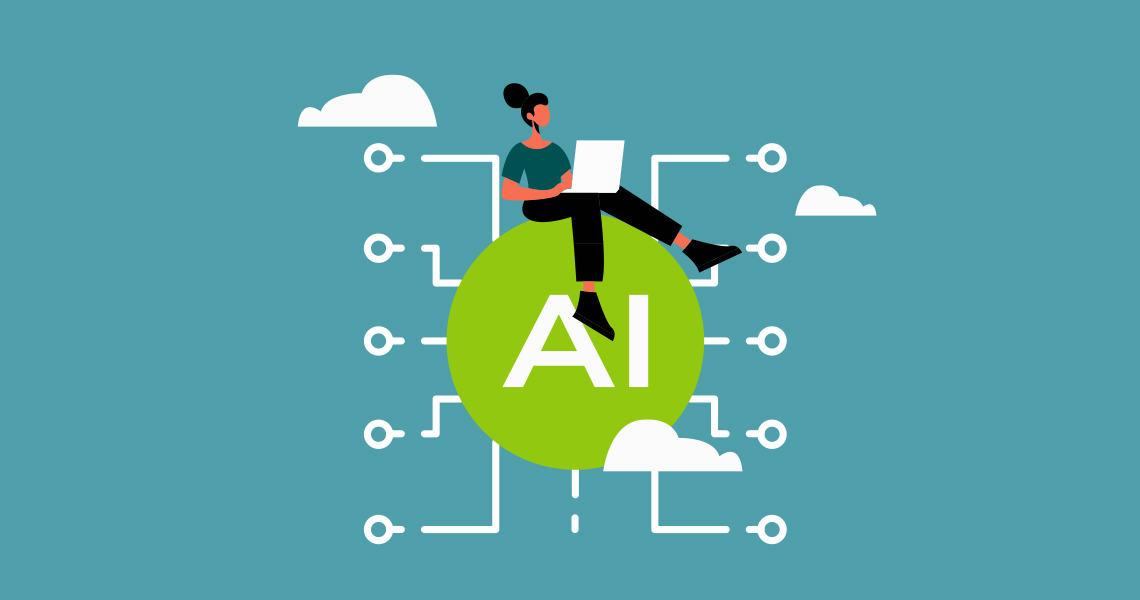The buzz around AI in higher ed is undeniable. The topic dominated conference discussions at ASU + GSV, with nearly every booth, breakout, and keynote referencing AI somehow. When AI gets tossed around so often, it can be hard to differentiate between what’s real and what isn’t.
While the transformative promise of AI is exciting, successful AI implementation requires more than fast adoption. The more important question is: How can institutions move from ideas to impact?
The reality is that achieving meaningful results with AI requires more than just purchasing the latest tool. That’s often the easiest part, but it can also be a trap. Tool and tech procurement, absent a well-informed implementation strategy, can add to your technical debt. It’s critical to look beyond the buzzword and first define where you want your institution to be in the future. With your north star in place, you can determine how AI can play a role in a holistic solution.
Operationalizing AI for Real Impact
Many discussions around AI for higher ed focus on its evolving capabilities to generate content, automate tasks, engage and support students, and handle other critical functions. But what is the impact you’re looking to make, and how are you going to measure the return on investment? Those questions tend to be missing from higher ed’s ongoing AI conversation. Don’t implement tactics (or tools) until you know their role in your broader tech strategy. Too often, there is a heightened sense of urgency to implement and not enough focus on the complexities of weaving these tools into the intricate fabric of an institution. There is no easy button in AI.
Trying to catch the AI hype without having a strategic AI implementation plan is like buying state-of-the-art lab equipment before you’ve decided what type of science courses you are going to offer. Effective integration involves significant change management, process design, and ongoing investment.
For example, many schools already use AI-powered agents to assist with student recruitment by answering prospects’ questions and suggesting next steps. These bots can scale engagement significantly — but to be effective, they require meticulous training, constant monitoring, and attentive human oversight to ensure the interaction is aligned with a school’s culture and values. As technology evolves, the operational model must adapt. Without constant care and feeding, AI tools can become outdated, provide incorrect information, or fail to align with the institution’s unique voice and mission. Remember, technology and tool outputs are only as good as the inputs.
And the investment isn’t just the initial software cost. The investment also includes ongoing commitment to deployment, integration, training, and ensuring the technology drives the desired outcomes. Many underestimate this operational heavy lifting in the rush to adopt AI, yet it’s the linchpin for success.
Start with Strategy, Not Just Software
A more effective, pragmatic approach to AI implementation in higher education begins by identifying the institution’s core challenges and strategic objectives.
Are you focused on reversing enrollment declines? Improving student retention rates? Enhancing support services? Increasing operational efficiency? By defining your goals and measurable key performance indicators (KPIs) from the outset, you’re in the best position to strategically evaluate how AI — alongside other data, technology, and talent resources — can contribute to a solution that supports the entire student lifecycle.
Without this clarity, institutions risk spending significant resources without achieving tangible returns. It’s about focusing efforts, perhaps starting with a contained, controllable area where impact can be carefully monitored and measured, rather than attempting to boil the ocean.
Leveraging AI Strategically
Currently, many institutions are grappling with important discussions around AI ethics, academic integrity, and preventing misuse by students to cheat. It’s important not to get stuck there. Students who want to circumvent rules will find a way. AI is simply the newest tool. Focusing excessively on policing AI use means missing the boat on its strategic potential.
The real opportunity lies in leveraging AI across the entire student lifecycle — from recruitment and enrollment to engagement, support, and retention. AI can personalize outreach, provide 24/7 advising support, identify at-risk students earlier, and automate administrative tasks, freeing up staff for higher-value interactions. It will almost certainly be part of effective solutions, but it shouldn’t be the only part.
The Indispensable Human Element
In the race to apply AI, we must not forget the crucial role of human intelligence (HI). AI tools, even sophisticated ones, require human oversight. They must train on the correct data and the institution’s values, mission, and unique persona.
Humans are essential for guiding AI, correcting its inevitable errors and ensuring its outputs align with institutional standards. Furthermore, education remains a fundamentally human endeavor. While AI can enhance efficiency and scale, it cannot replace true empathy, mentorship, and social-emotional connection, which are vital to student success and belonging. The most effective approach combines the power of AI with the irreplaceable value of human talent — a synergy Collegis champions through its focus on data, tech, and talent.
Moving Fast, But Moving Smart
The desire to rapidly adopt AI in higher ed is understandable. However, a rushed implementation without a clear strategy is likely to falter. Stepping back to define objectives, plan the integration, and establish metrics is the best way to accelerate the path to meaningful impact.
This more deliberate, strategic approach enables institutions to harness AI’s power effectively, ensuring it serves their unique mission and drives measurable results. It’s about moving beyond the hype and focusing on the pragmatic steps needed to make AI work for higher ed, creating sustainable value for the institution and the students it serves. The journey requires careful navigation, a focus on operational reality, and often, a partner who understands how to bridge the gap between potential and practice.
Innovation Starts Here
Higher ed is evolving — don’t get left behind. Explore how Collegis can help your institution thrive.

